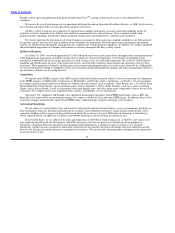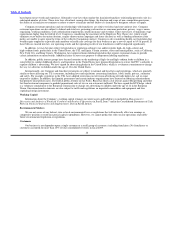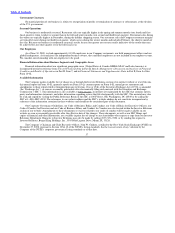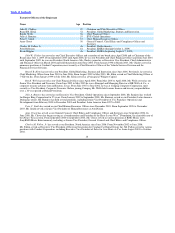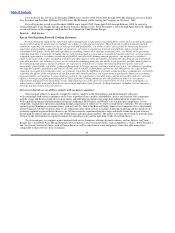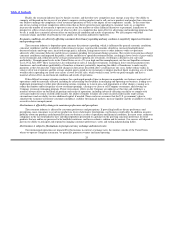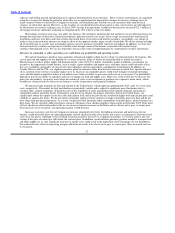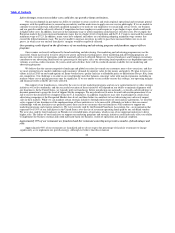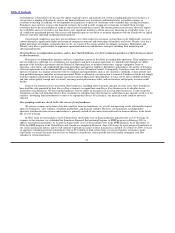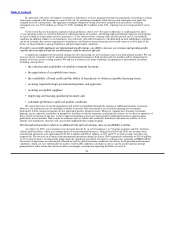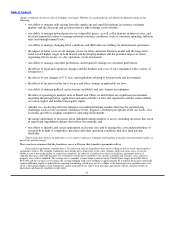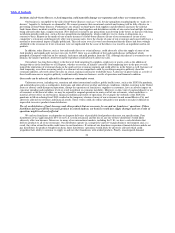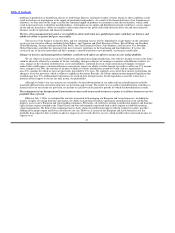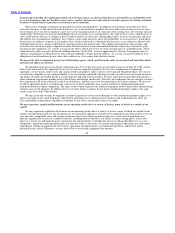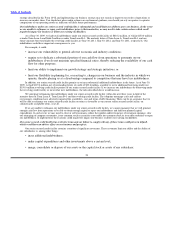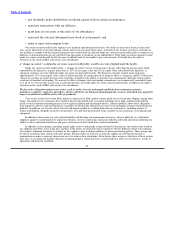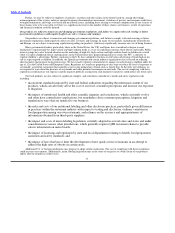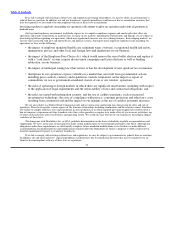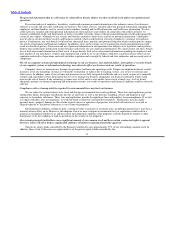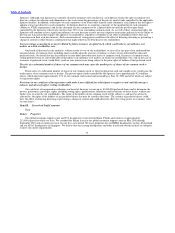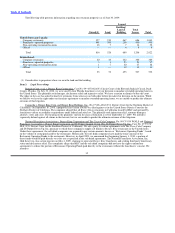Burger King 2009 Annual Report Download - page 27
Download and view the complete annual report
Please find page 27 of the 2009 Burger King annual report below. You can navigate through the pages in the report by either clicking on the pages listed below, or by using the keyword search tool below to find specific information within the annual report.
Table of Contents
charges, restaurant closures or sales of Company restaurants. Whether we can manage this risk effectively depends mainly on the
following:
• our ability to manage risks arising from the significant and rapid fluctuations in currency exchange
markets and the decisions and positions that we take to hedge such volatility;
• our ability to manage upward pressure on commodity prices, as well as fluctuations in interest rates, and
local governmental actions to manage national economic conditions, such as consumer spending, inflation
rates and unemployment levels;
• our ability to manage changing labor conditions and difficulties in staffing our international operations;
• the impact of labor costs on our margins given our labor−intensive business model and the long−term
trend toward higher wages in both mature and developing markets and the potential impact of union
organizing efforts on day−to−day operations of our restaurants;
• our ability to manage consumer preferences and respond to changes in consumer preferences;
• the effects of legal and regulatory changes and the burdens and costs of our compliance with a variety of
foreign laws;
• the effects of any changes to U.S. laws and regulations relating to foreign trade and investments;
• the effects of increases in the taxes we pay and other changes in applicable tax laws;
• our ability to manage political and economic instability and anti−American sentiment;
• the risks of operating in markets such as Brazil and China, in which there are significant uncertainties
regarding the interpretation, application and enforceability of laws and regulations and the enforceability
of contract rights and intellectual property rights;
• whether we can develop effective initiatives in underperforming markets that may be experiencing
challenges such as low consumer confidence levels, negative consumer perceptions about our foods, slow
economic growth or a highly competitive operating environment;
• the nature and timing of decisions about underperforming markets or assets, including decisions that result
in significant impairment charges that reduce our earnings; and
• our ability to identify and secure appropriate real estate sites and to manage the costs and profitability of
our growth in light of competitive pressures and other operating conditions that may limit pricing
flexibility.
These factors may increase in importance as we expect to open new Company and franchise restaurants in international markets as
part of our growth strategy.
There can be no assurance that the franchisees can or will renew their franchise agreements with us.
Our franchise agreements typically have a 20−year term, and our franchisees may not be willing or able to renew their franchise
agreements with us. For example, franchisees may decide not to renew due to low sales volumes, high real estate costs, or may be
unable to renew due to the failure to secure lease renewals. In order for a franchisee to renew its franchise agreement with us, it
typically must pay a $50,000 franchise fee, remodel its restaurant to conform to our current standards and, in many cases, renew its
property lease with its landlord. The average cost to remodel a stand−alone restaurant in the United States ranges from $200,000 to
$450,000 and the average cost to replace the existing building with a new building is approximately $1.0 million. Franchisees generally
require additional capital to undertake the required remodeling, which may not be available to the franchisee on acceptable terms or at
all. If a substantial number of our franchisees cannot or decide not to, renew their franchise agreements with us, then our results of
operations and financial condition would suffer.
25


